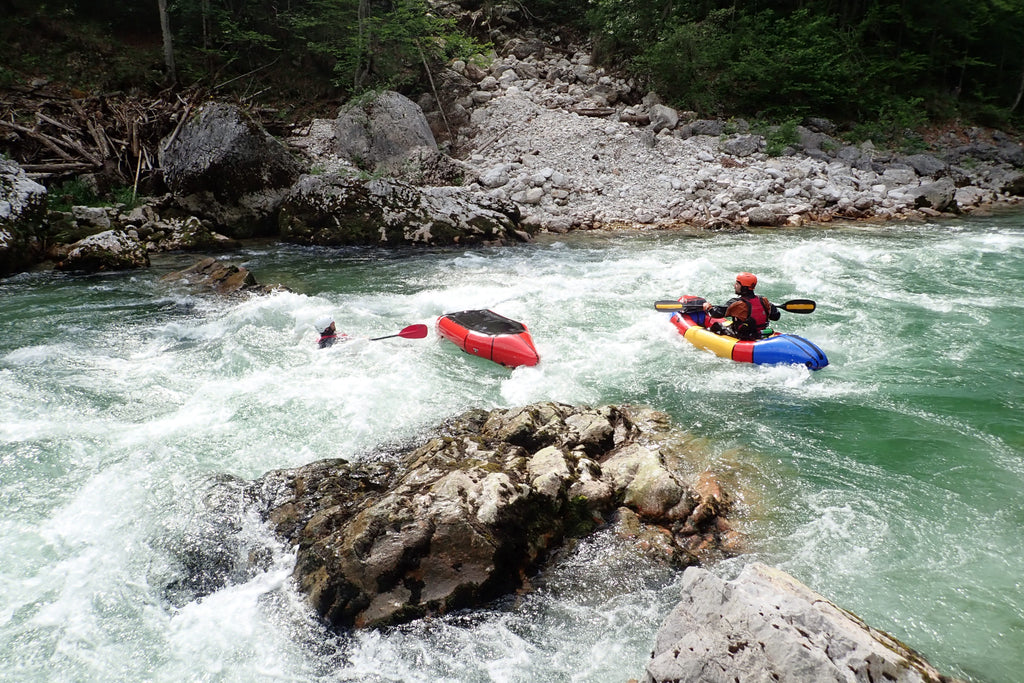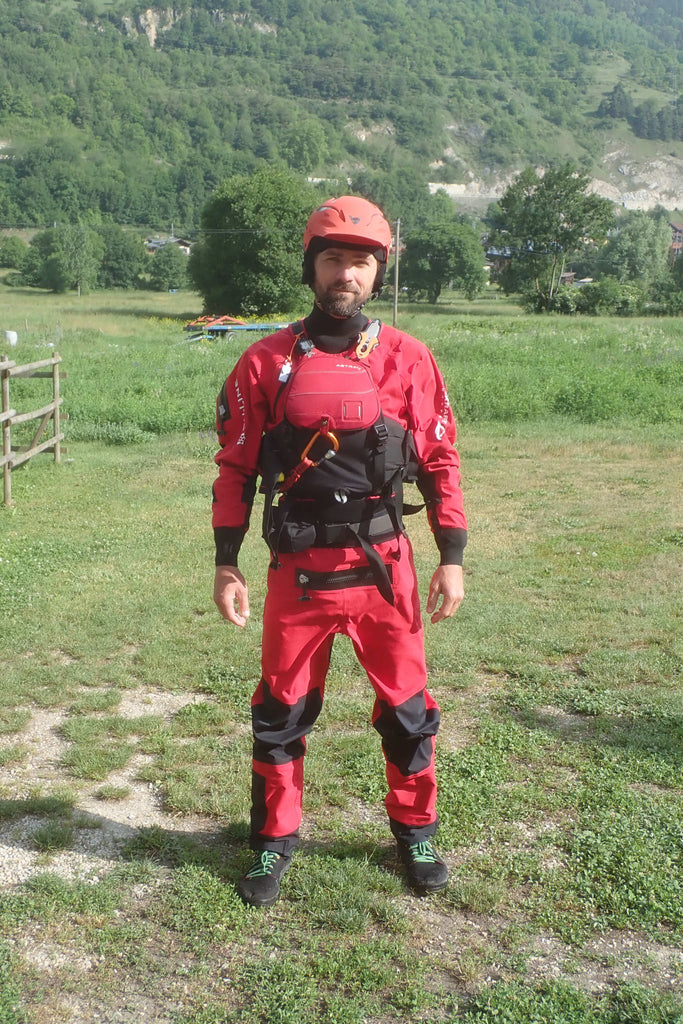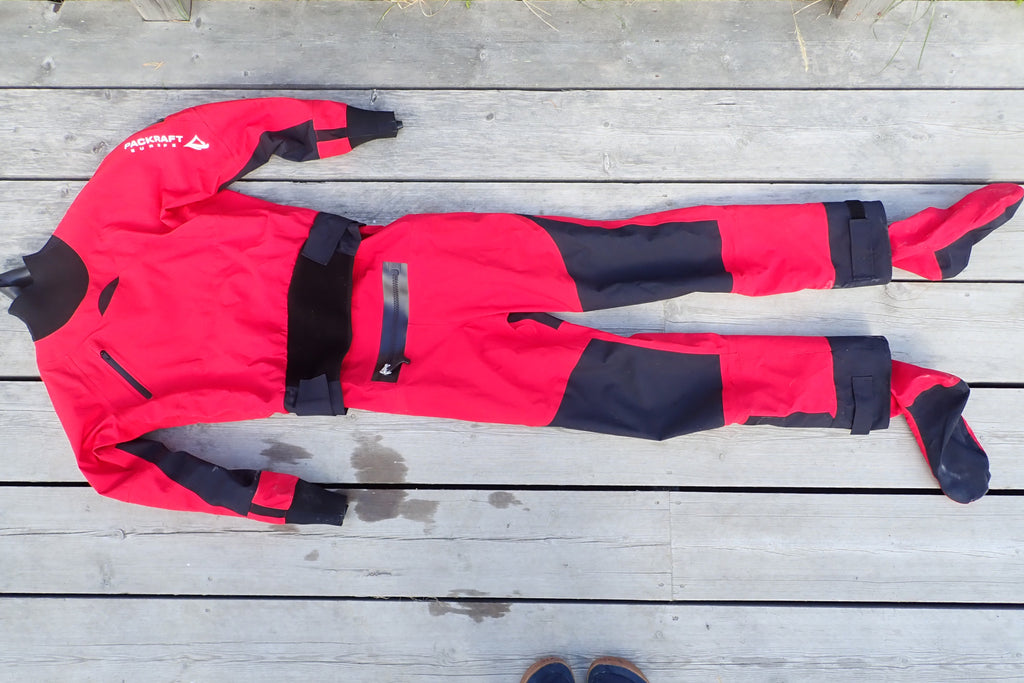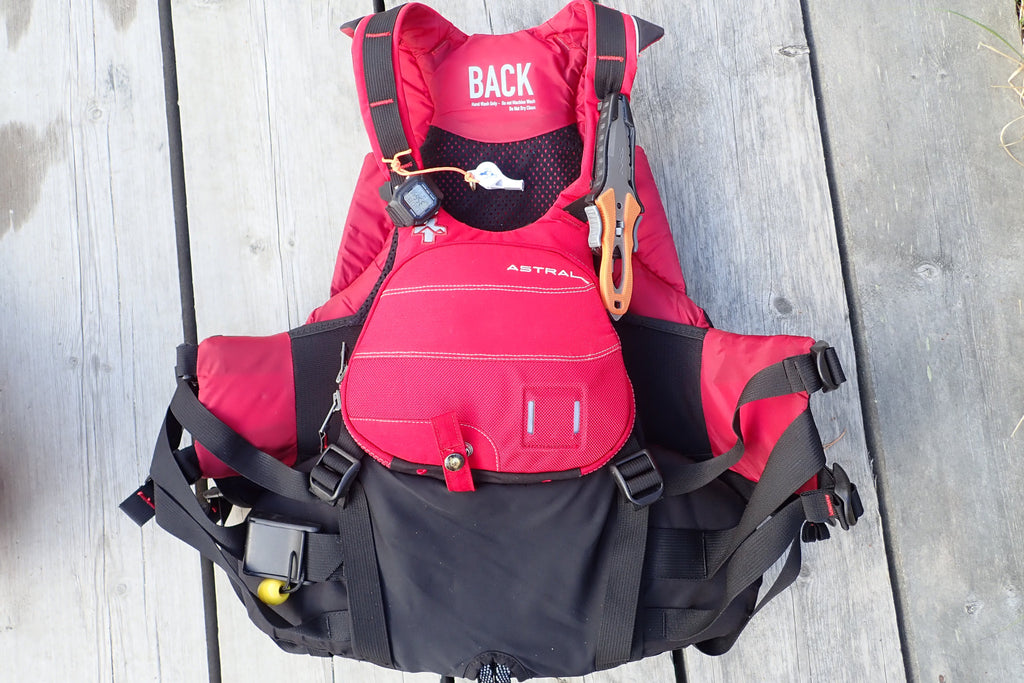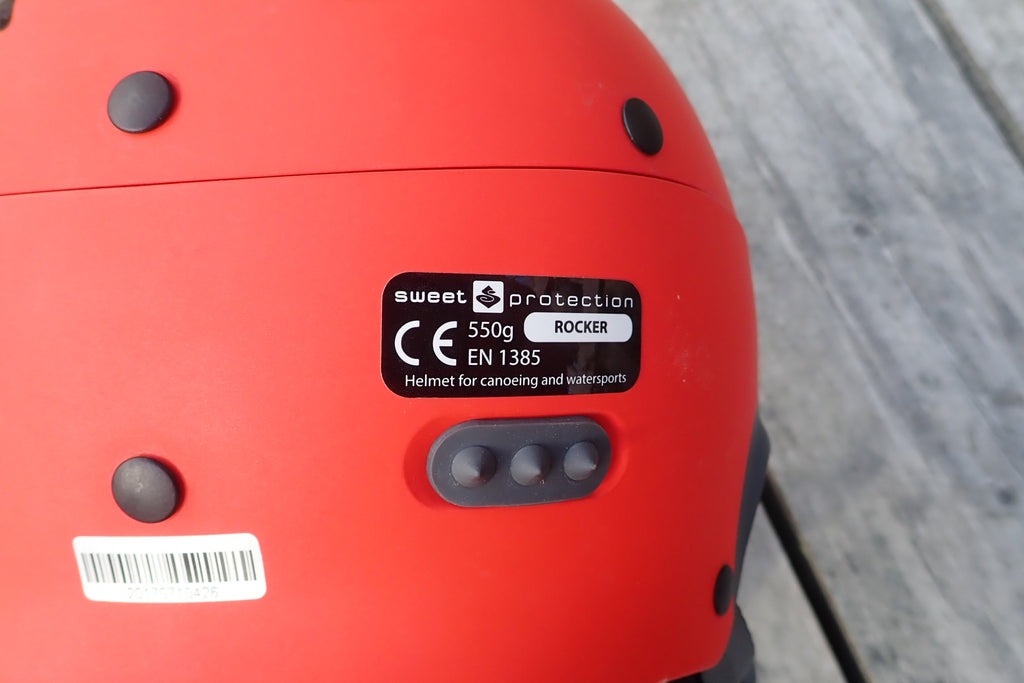
Persönliche Schutzausrüstung (PSA) für Packrafting im Wildwasser.
Share
Bist du ausreichend vorbereitet für Packrafting im Wildwasser?
Dies ist der erste Teil unserer Packrafting-Sicherheitsserie.
Dieser Artikel richtet sich an Paddler, die sich im Wildwasser der Stufe II und höher bewegen möchten. Allerdings wird die hier vorgestellte Ausrüstung in jeder Wildwasser- oder Paddelumgebung von Nutzen sein. Ausrüstung ersetzt jedoch nicht Training, Übung, Erfahrung und Urteilsvermögen.
In diesem ersten Teil behandeln wir, warum Sicherheit so wichtig ist, und geben einen Überblick über die richtige persönliche Schutzausrüstung (PSA) für das Packrafting im Wildwasser.
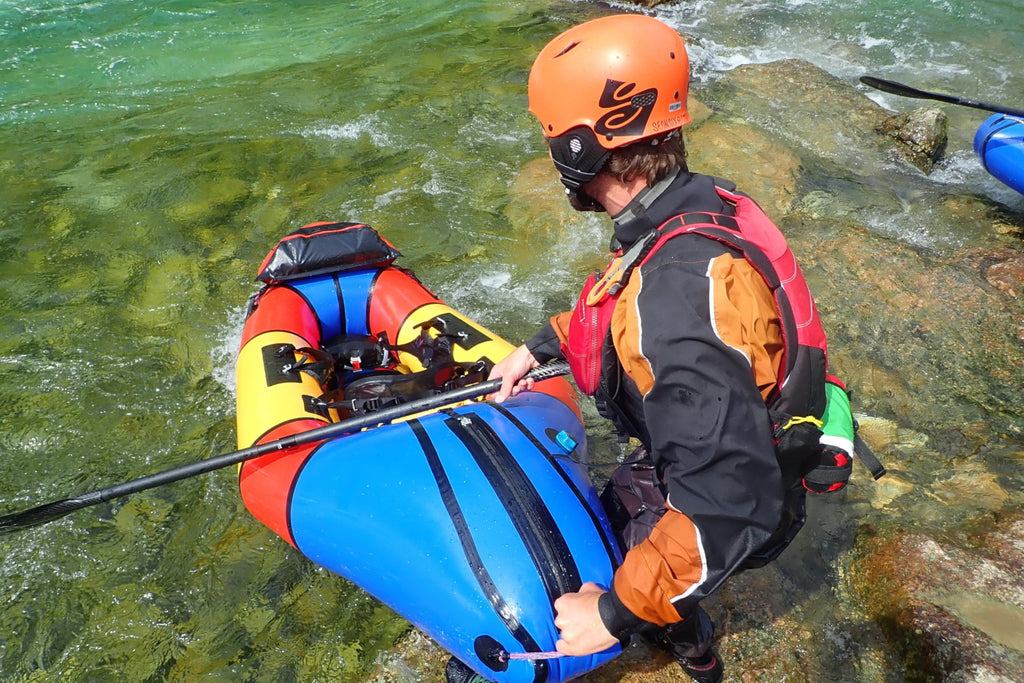
Packrafting ist kein Wandern auf Wasser!
Packrafting ist eine Wassersportart und sollte auch als solche behandelt werden.
In den letzten 30 Jahren, insbesondere in den frühen Tagen der Entwicklung von Wildwasser-Kajakfahren und -Rafting, haben viele Menschen ihr Leben verloren oder wurden schwer verletzt. Jede Art von Wildwasserpaddeln ist ein Extremsport und sollte entsprechend ernst genommen werden.
Packrafting ist EINFACH... ZU EINFACH.
Packrafts sind einfach zu bedienen und vermitteln ein falsches Sicherheitsgefühl! Neulinge im Packrafting überschätzen oft die Fähigkeiten ihres Packrafts und sich selbst. Sie haben oft kein Bewusstsein für die Gefahren von bewegtem Wasser. Man weiß einfach nicht, was man nicht weiß.
Menschen sind beim Packrafting ums Leben gekommen, und leider werden weitere Todesfälle folgen. Aber müssen wir wirklich die gleichen Fehler wiederholen, die in den frühen Tagen des Kajak- und Raftingsports gemacht wurden?
Es gibt absolut keinen Grund, das Rad neu zu erfinden. Wir können fast alles von der Wildwasser-Kajak- und -Rafting-Community übernehmen.
Ausrüstung ist toll
Wissen ist besser
Training und Erfahrung sind das Beste
Die Frage ist nicht, OB, sondern wann. Schwimmen ist ein Teil des Packraftings, also bereiten Sie sich am besten darauf vor.
PSA (Persönliche Schutzausrüstung)
Lass uns mit den Grundlagen beginnen. Man geht ja auch nicht im Boardshort und Flip-Flops Skifahren. Warum sollte Packrafting anders sein?
Beim Packrafting gilt: DRESS TO SWIM!
Stell dich darauf ein, dass es nicht die Frage ist, ob du ins Wasser fällst, sondern wann. Daher ist es am besten, darauf vorbereitet zu sein. Wie kalt ist der Fluss? Auch wenn die Sonne scheint, könnte der Fluss von einem Gletscher oder Schneeschmelze gespeist sein. Was, wenn das Wetter umschlägt? Die richtige PSA beginnt bei der Wahl der Kleidung und umfasst alles, was du am Körper trägst, während du auf dem Fluss bist. Teste all deine Ausrüstung vorher in einer kontrollierten Umgebung!
Zum Schwimmen gekleidet. Richtige persönliche Schutzausrüstung von Kopf bis Fuß.
Kleidung und Schuhe
Schuhe – Haben sie genug Grip auf nassen Steinen? Einige Wanderschuhe sind super, bis sie nass werden – dann verwandeln sie sich in Eislauf-Schuhe.
Empfehlung: Astral Brewer – ideal für Packrafting, mit gutem Halt auf nassen Steinen, schnell trocknend und leicht.
Kleidung – KEINE BAUMWOLLE! Das schließt Unterwäsche und BHs ein. Ein Sprichwort in der Outdoor-Community besagt: „Cotton is rotten“ oder „Cotton kills“. Der Grund ist, dass Baumwolle, sobald sie nass ist, keinerlei Isolierung bietet und dich sogar abkühlt, was das Risiko für Unterkühlung schnell erhöht.
Empfehlung:
- Socken – Dicke Wollsocken
- Thermo-Unterwäsche – Merino, Capilene oder Polypro
- Isolationsschichten – Fleecehosen und -oberteile, die warm halten
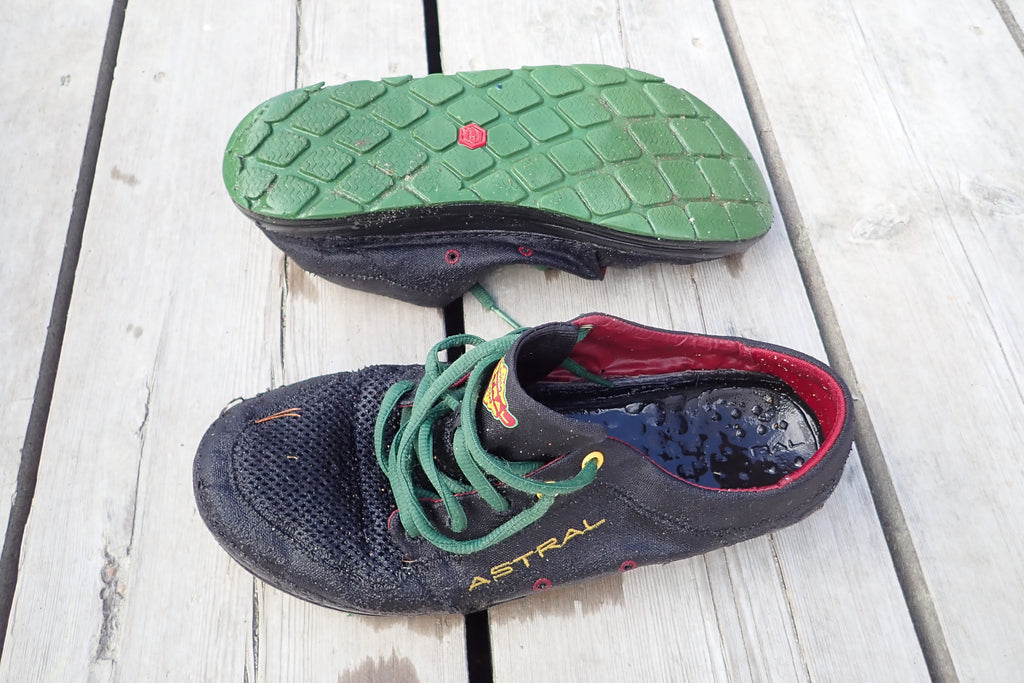
Astral Brewer, niedriges Profil zur Reduzierung des Einklemmrisikos, leicht, schnell abfließend/trocknend und vor allem super griffig auf nassem Fels. Mit guten Schuhen können Sie sich sicher im und um den Fluss bewegen.
Keine Baumwolle! Dicke Wollsocken, lange Thermo-Unterhosen aus Polypro und ein gewebtes Thermo-Oberteil aus Merinowolle für zusätzliche Wärme beim Tragen eines Trockenanzugs.
Neoprenanzug vs. Trockenanzug
- Neoprenanzug: Bietet zusätzlichen Auftrieb, schützt vor Stößen, angenehm in wärmeren Umgebungen und kostengünstig. Nachteile: Schwer und nass.
- Trockenanzug: Hält trocken, bequemer und wärmer in kalten Umgebungen (mit der richtigen Unterbekleidung). Nachteile: Teurer und weniger robust als Neoprenanzüge.
Empfehlung: Ein hochwertiger Trockenanzug mit Verstärkungen an den richtigen Stellen, wasserdichten Socken, Latexmanschetten an Handgelenken und Hals sowie wasserdichten Reißverschlüssen.
Hochwertiger Trockenanzug, an den richtigen Stellen verstärkt, wasserdichtes, atmungsaktives Gewebe, eingenähte wasserdichte Socken, Latexmanschetten an Handgelenken und Hals, wasserdichte Reißverschlüsse.
PFD (Personal Flotation Device) vs. Schwimmweste
Eine Schwimmweste ist so konzipiert, dass sie dich auf dem Rücken hält und deinen Kopf über Wasser hält, wenn du bewusstlos bist. Sie sollte nur von Personen getragen werden, die nicht schwimmen können. Ein PFD bietet Auftrieb und ermöglicht volle Bewegungsfreiheit zum Schwimmen und Paddeln, sollte jedoch nur von Menschen getragen werden, die schwimmen können. Für Packrafting im Wildwasser empfehlen wir ein PFD mit mindestens 70N Auftrieb, ein Rescue-PFD mit Brustgurt ist für alle empfehlenswert, die Klassen ab Wildwasser II paddeln und eine Rettungsausbildung haben oder in Gruppen führen.
Wildwasser-Schwimmweste = mindestens 70 N, gute Passform. Optional: Brustgurt mit Schnellverschluss (Rettungs-Schwimmweste) und sichtbarer Farbe. Pfeife und Messer sind schnell und einfach mit einer Hand zu erreichen.
Helm
Ein Helm für den Einsatz im Wildwasser ist unerlässlich. Er sollte CE-zertifiziert sein (EN1385) und speziell für Wildwasser geeignet sein.
Empfehlung: Sweet Rocker Helm – CE-geprüfter Helm für den Einsatz im Wildwasser.
CE-geprüfter Helm für den Einsatz im Wildwasser.
Weitere Ausrüstung: Pfeife und Rettungsmesser
- Pfeife – Am besten ohne Erbsen, damit sie auch im nassen Zustand funktioniert. Leicht zugänglich während des Paddelns.
- Rettungsmesser – Zum schnellen Durchtrennen von Seilen; sollte auch einhändig erreichbar sein.
Notfallausrüstung: Die 10 Essentials, die du immer dabei haben solltest
- Warme Kleidung
- Nahrung & Wasser (zusätzliche Kalorien/Hydration)
- Messer & Pfeife
- Notfalldecke
- Feuerkit
- Karten/Ortskenntnisse (Notausstiege)
- Kompass mit Spiegel
- Stirnlampe (+ Ersatzbatterien)
- Erste-Hilfe-Set
- Kommunikationsmittel (Handy/PLB/Inreach/Spot)
Packrafting sicher gestalten – unsere Verantwortung
Packrafting wächst schnell! Es liegt an jedem Einzelnen von uns, den Sport sicher voranzubringen. Wir müssen die Fehler, die in den frühen Tagen des Wildwasser-Kajakfahrens gemacht wurden, nicht wiederholen. Lass uns gemeinsam daran arbeiten, alle Paddler sicher zu halten. Nimm an einem Wildwasser-Rettungskurs teil, übe deine Fähigkeiten, paddle mit erfahrenen Paddlern, nutze deinen gesunden Menschenverstand und teile dein Wissen.
Bleib dran für den nächsten Teil, in dem wir darüber sprechen, wie man sicher kentert und sich selbst retten kann.
Sicheres Paddeln,
Seon
Hat dir dieser Beitrag gefallen? Melde dich am Ende der Website für unseren Newsletter an und erhalte zukünftige Packrafting-Artikel (max. eine E-Mail pro Monat)!

